Challenges of OR Lighting
Light and Shadow
In the operating room (OR), proper lighting is crucial to the success of surgical procedures, as it allows surgeons to see the surgical site with precision and clarity. Surgeons rely on optimal lighting to differentiate between tissues, blood vessels, nerves, and other critical anatomical structures. For example, in deep cavity surgeries like neurosurgery or abdominal surgery, proper lighting is essential to avoiding damage to sensitive structures.
However, shadows caused by equipment, the surgical team, or even the patient's anatomy can cast shadows that obscure the view of the operating site. Shadowing represents a significant challenge for surgeons, as it can complicate procedures, prolong surgical time, and even increase the risk of errors.
Shadows and Surgical Precision
Shadows impede a surgeon’s ability to clearly visualize the surgical site, increasing the likelihood of errors. If a surgeon cannot see the structures they are working on, they may inadvertently cut or damage nearby tissues. In some procedures, such as orthopedic or cardiovascular surgeries, clear visibility is critical for ensuring successful outcomes. The formation of shadows can lead to missteps, prolonged surgery, or the need for corrective measures, which all contribute to patient complications and extended recovery times.
The ability to distinguish between healthy and unhealthy tissue is especially important, as diseased or damaged tissue may have subtle differences in color, texture, or tone that are not immediately apparent under poor lighting conditions. In oncologic surgeries, for instance, surgeons must carefully excise cancerous tissue while sparing surrounding healthy structures. Shadows that obscure part of the surgical field make this task more difficult, raising the risk of either incomplete resection or unnecessary removal of healthy tissue.
In gastrointestinal surgeries, ischemic tissue—which is deprived of blood flow—can be difficult to identify if lighting is compromised. Similarly, in trauma cases, distinguishing necrotic or damaged tissue from viable tissue requires consistent, shadow-free lighting to guide decisions about what to preserve or remove.
The Dynamic Nature of Surgery and the Shadowing Challenge
One of the biggest challenges in overcoming shadowing is the dynamic nature of surgery itself. During an operation, surgeons and their team constantly move, adjust their positions, and bring various instruments into the field. Each of these movements can alter the distribution of light, creating shifting shadows that obstruct visibility at crucial moments.
The Risks of Shadowing
The consequences of shadowing extend beyond inconvenience. Studies have shown that inadequate visibility in surgery can lead to mistakes that prolong procedures, increase the risk of bleeding, and cause damage to adjacent tissues. Even slight miscalculations, caused by difficulty in visualizing the operating site, can lead to significant complications.
Additionally, the physical and cognitive demands on surgeons in poorly lit conditions are considerable. The increased strain on their eyes, combined with the need to compensate for obstructed visibility, can lead to fatigue. This physical fatigue can contribute to diminished focus and slower reaction times, increasing the likelihood of mistakes as the procedure progresses.
A New Solution
MezLight offers a new approach to solving for issues of shadowing inherent in current OR lighting solutions. By mounting a super bright LED light on the end of a flexible neck the MezLight provides you with the ability to direct light precisely where it is needed at any point in a procedure. Adjusting the position of the light is as easy as aiming a flashlight and when you let go of the light head it unwaveringly maintains its position. Learn more about the MezLight at www.mezlight.com and then contact us to schedule a trial.


